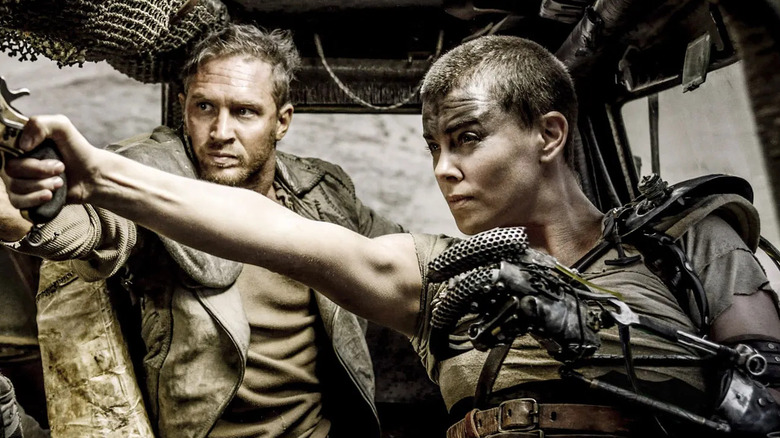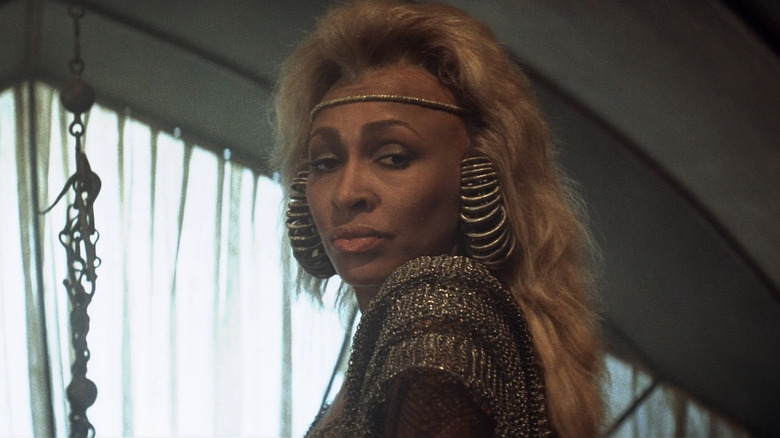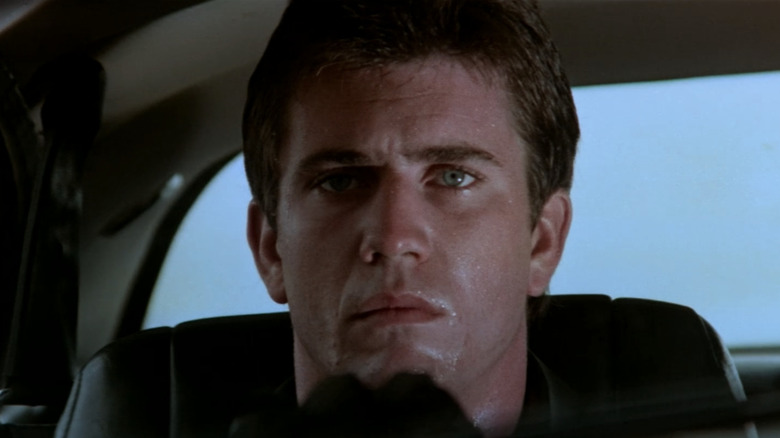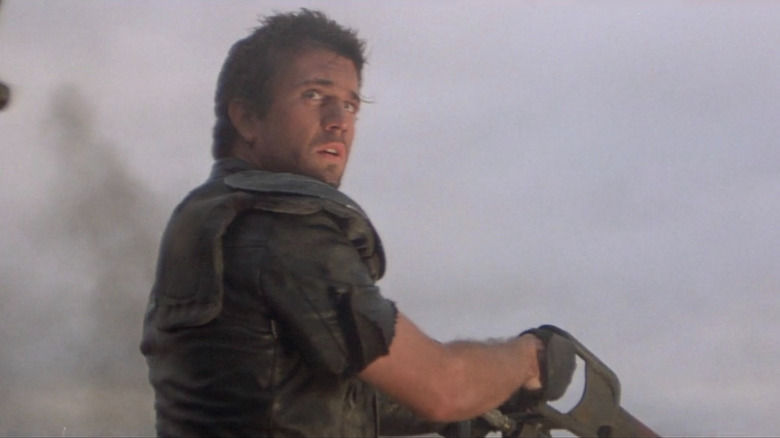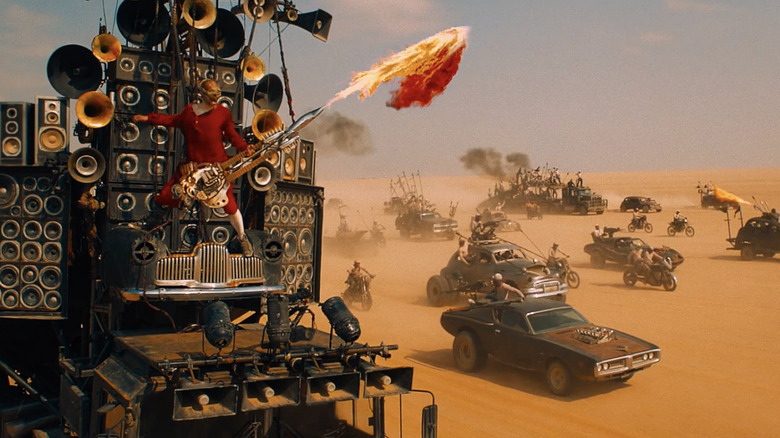The Mad Max Movies Ranked: Shiny And Chrome (And Thunderdome)
The "Mad Max" series is one of the few film franchises that feels completely plucked from the mind of its creator. From the world building to the construction of car chases, filmmaker George Miller has figured out not just how to make perfect action films but how to expand and build upon the ones that came before. They have not always been easy to make (far from it), but they are uninhibited thrill rides that you can rewatch time and time again.
The upcoming "Furiosa," a prequel to "Mad Max: Fury Road," will make for an interesting pivot to the series, as it will be the first that does not center the character Miller has become synonymous with. Max, who is mad, had a sterling run for his four films, but "Fury Road" proved that there are other ways to go about exploring this hellish world. So let's look back at the four "Mad Max" films and see how they stack up against each other.
4. Mad Max Beyond Thunderdome
No "Mad Max" film is bad per se, but there is clearly one that sits at the bottom of the pile. That would be the third entry in the series, 1985's "Mad Max Beyond Thunderdome" (no colon in the title). This is a case where the film could essentially be split into two separate halves, and one of them is great. The other? Not so much.
"Beyond Thunderdome" has a first-half chock-full of wonderful world building. Max (Mel Gibson) has offered his skills as collateral in exchange for entry into Bartertown and ends up in the titular Thunderdome to do battle, on behalf of Bartertown's ruler Aunty Entity (Tina Turner), against Blaster (Paul Larsson), the gladiatorial champion for Entity's rival Master (Angelo Rossitto). Production designer Graham "Grace" Walker and costume designer Norma Moriceau get to go absolutely hog wild in creating Bartertown, and you end up wanting to spend the entire movie there, especially when you have the electric Tina Turner hovering over everything.
It is when the film goes beyond Thunderdome that we get into trouble. Max ends up with a bunch of children, and any kind of rip-roaring fun you were having just fades away. Filmmakers, particularly genre filmmakers, always have an inclination to throw in children when sequels roll around. The first "Mad Max" sequel, "The Road Warrior," even had one, but with that film, Miller knew to cap it off at one. In "Beyond Thunderdome," there's a whole society of children, and all they are really good for is being irritating. It is even more of a whiplash when you are coming off of such an entertaining first-half. "Mad Max Beyond Thunderdome" is the one lackluster picture in the series, though it still has plenty to recommend.
3. Mad Max
"Mad Max" was not just the first film in the series, but it was George Miller's directorial debut. It was extremely low budget and starred a nobody at the time named Mel Gibson. It may be a first at bat, but it showcases all the whizz-bang, inventive camerawork that makes George Miller the incredible director he is. While "Mad Max" is certainly a raw film, Miller's imagination cannot be contained in a small budget, and he makes the most of the limited resources he has. You also immediately see why Mel Gibson went on to become the charismatic movie star who dominated Hollywood (no matter how problematic a man he is).
The film does have its fair share of world building, but it is a far cry from what the films would evolve into. This being a desolate, apocalyptic film mainly comes from the fact that they were shooting out in Australia and did not have much money to put on screen. As far as the world of the first "Mad Max" goes, there is still some semblance of society. Max begins the film as a police officer. There are buildings and real locations that they shoot at. The world hadn't collapsed yet, but it's certainly on the precipice. For me, the fun of the "Mad Max" films greatly lies in the fully realized post-apocalyptic world, and this one is missing that extra push into the insane. "Mad Max" is a fairly grounded picture, which serves as an interesting counterpoint to its sequels but holds it back slightly from being something truly special.
2. The Road Warrior
When we think of "Mad Max," we are really thinking about "The Road Warrior." This is the film where everything that was great about the first film gets turned up a few extra dials and becomes something totally unimpeachable. The camera work is more assured and more insane. The stunts are incredibly dangerous. And George Miller's world gets to be fully realized and put on display to be admired by everyone. The encampments, the cars, and the leather-clad marauders are all here. "The Road Warrior" takes Max and makes him the character we know him to be, an update of the lone rider in a Western who travels from town to town and affects the lives of a group of people before moving on to his next stop.
Just the image of Lord Humungus (Kjell Nilsson), dressed in a metal mask and leather harness, will never leave your brain as something that is intimidating and silly at the same time. This is a film that is pure adrenaline and fun, bursting at the seams with creativity. Even the feral kid (Emil Minty) does not overstay his welcome. Though it cost prohibitively more than the original "Mad Max," this was still a modestly sized budgeted film, but George Miller makes it feel massive enough that you could easily have endless adventures in this world with Max at the center. "The Road Warrior" would have stood as Miller's masterpiece, but he had to make another return to the franchise after 30 years to one-up himself in the most spectacular way imaginable.
1. Mad Max: Fury Road
The first three "Mad Max" were George Miller's first three feature films as a director. He went on to make prestige dramas, supernatural comedies, and family films about pigs and penguins. While those sound like safe choices on paper, each one demonstrates a man pushing his imagination and technological prowess further and further. But 30 years after "Beyond Thunderdome," he returned to his baby.
"Mad Max: Fury Road" is, quite simply, one of the most jaw-dropping, explosive, and relentless action films of all time. Half the movie is one chase scene, and the other half is another chase scene. However, Miller packs into that bare bones structure more spectacular stunt work, political and social commentary, and one-of-a-kind world building than entire film franchises have been able to accomplish.
A major reason "Fury Road" works so well is that it finally gives Max (played by Tom Hardy this time) a proper co-lead to play off of in Charlize Theron's Furiosa, someone else completely driven by trauma and seeking justice. Miller crafted a story about the injustices and harm a patriarchal society places on women, and having Max be the film's center would have felt odd at best and icky at worst. He realized that the post-apocalyptic, detailed world he created should not just lie solely on Max's shoulders. If it wants to feel real, other people will be the center of stories, and Furiosa is here, along with all of the women she is helping protect. Max is an ally, which makes sense as the wandering loner.
But most of all, this thing just whips. Almost every frame features something you cannot believe you are seeing. George Miller was rightfully nominated for Best Director for "Mad Max: Fury Road," and him not winning is outrageous. This is his masterpiece and the crown jewel of the "Mad Max" franchise.
